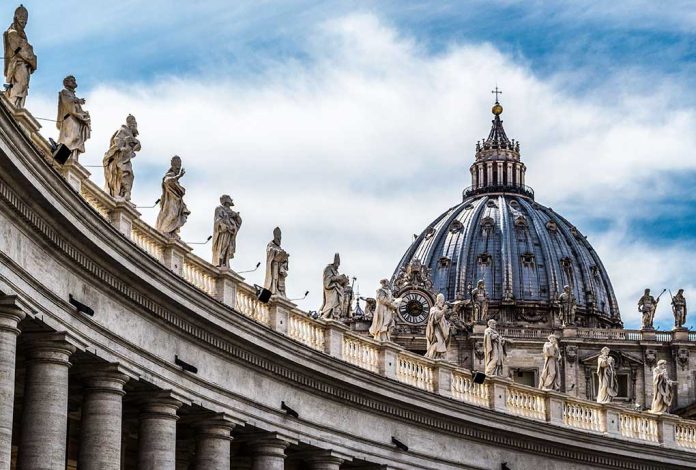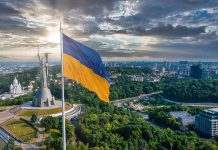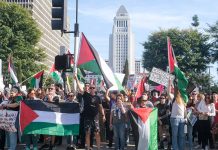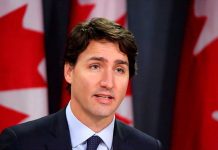
When a Pope’s reign ends, over a billion Catholics worldwide await the sacred process that will determine who will next lead their Church, a ritual shrouded in secrecy dating back centuries.
Top Takeaways
- When a Pope dies or resigns, the conclave process begins within 15-20 days, with only cardinals under 80 years old eligible to vote (currently 135 cardinals).
- The conclave is conducted under strict secrecy in the Sistine Chapel, with cardinals taking an oath under threat of excommunication.
- Voting requires a two-thirds majority to elect a Pope, with ballots burned to produce black smoke (no decision) or white smoke (successful election).
- The elected Pope chooses a new name and is announced to the world with the declaration “Habemus Papam!” (“We have a Pope!”).
- The entire process typically concludes within four days, culminating in the new Pope’s first blessing to the faithful gathered in St. Peter’s Square.
Ancient Traditions Meet Modern Times
The papal conclave represents one of the oldest continuous election processes in the world. Following the death or resignation of a pope, the governance of the Catholic Church passes to the College of Cardinals, with the camerlengo (currently Cardinal Kevin Farrell) administering daily operations. For nine days, funeral rites honor the deceased pontiff while cardinals from across the globe converge on Rome. These cardinals, recognizable by their distinctive red vestments, prepare to fulfill their most solemn duty.
During this interim period, the Church operates with limited authority. Important decisions such as appointing bishops must wait until a new pope takes office. Cardinals gather in general congregations to discuss the Church’s needs and prepare for the upcoming election. The official conclave must begin between 15 and 20 days after the papal vacancy occurs.
The Sacred Election Process
Only cardinals under 80 years of age may participate in the actual voting process. These electors begin their sacred duty with a special Mass in St. Peter’s Basilica, followed by a solemn procession into the Sistine Chapel. There, beneath Michelangelo’s masterpiece depicting the Last Judgment, they swear an oath of secrecy before the doors are locked and sealed. Any breach of confidentiality carries the most severe penalty in Catholic canon law: excommunication.
The conclave’s strict protocols date back to the 13th century, when frustration with lengthy papal elections led to extreme measures. Kurt Martens, a canon law professor at Catholic University of America, explains the historical context: “They locked the cardinals up behind closed doors, and then they put them on water and bread so that they would focus on the essentials.” While today’s cardinals enjoy more comfortable accommodations at the Vatican’s Domus Sanctae Marthae, the fundamental purpose remains the same: focused discernment without outside influence.
Once the period of mourning for Pope Francis is done, the centuries-old tradition of selecting a new pope, known as the conclave, gets underway. NBC’s Keir Simmons reports for TODAY about the process that’s shrouded in secrecy. https://t.co/8qlO6yXxcd
— TODAY (@TODAYshow) April 21, 2025
Ballots, Smoke, and Sacred Decisions
The voting process follows precise rules established over centuries. Cardinals cast handwritten ballots in silence, approaching the altar one by one to place their vote in a chalice. Four rounds of voting occur daily—two in the morning and two in the afternoon—until someone receives the required two-thirds majority.
After each session, the world watches the chimney atop the Sistine Chapel. The ballots are burned along with chemical additives that produce either black smoke (no decision) or white smoke (successful election). This ancient signal system informs the faithful gathered in St. Peter’s Square of the conclave’s progress. Once white smoke appears, bells ring throughout Vatican City, announcing that the Catholic Church has a new spiritual leader.
Habemus Papam: The World Meets Its New Pope
When a cardinal receives the required two-thirds majority, the Dean of the College of Cardinals asks him a momentous question: “Do you accept your canonical election as Supreme Pontiff?” Upon acceptance, the new pope immediately gains full papal authority. He chooses a papal name, reflecting the spiritual path he intends to follow. Attendants then dress him in the traditional white papal vestments before his first appearance on the central balcony of St. Peter’s Basilica.
The Senior Cardinal Deacon steps onto the balcony to announce to the waiting world: “Habemus Papam!” He then introduces the new pontiff by his chosen name. Moments later, the pope himself appears to give his first blessing. This blessing marks the beginning of a new chapter for the world’s 1.4 billion Catholics.



















